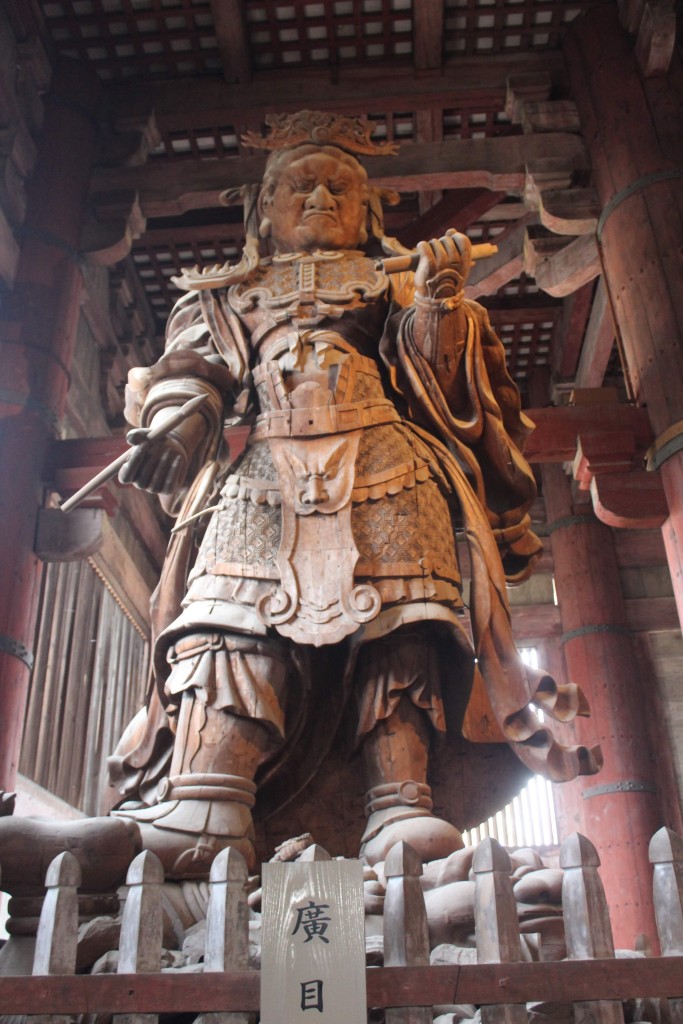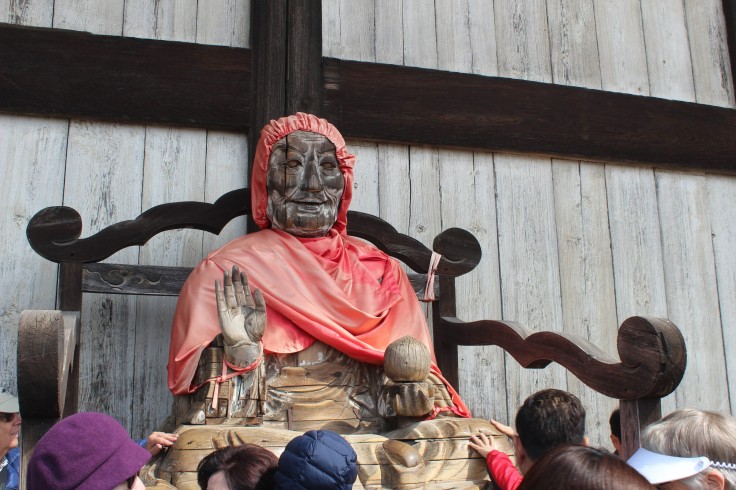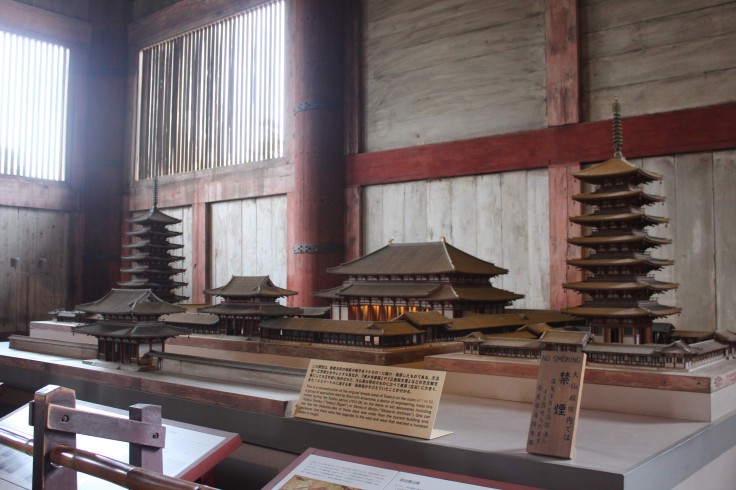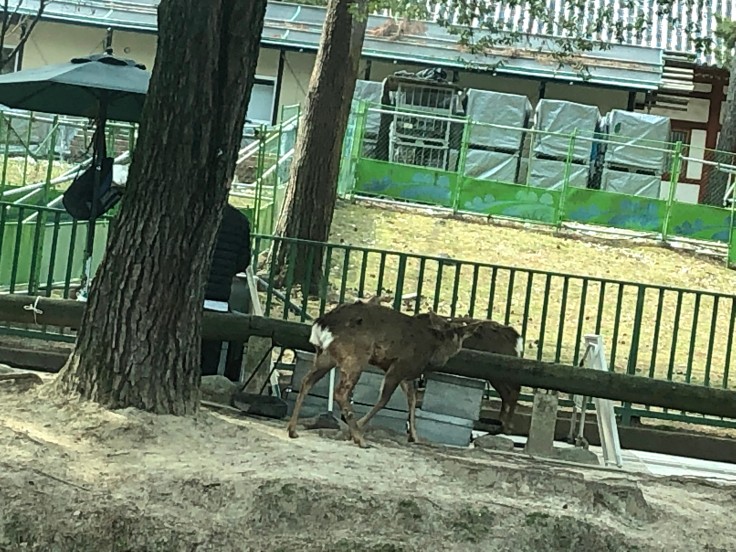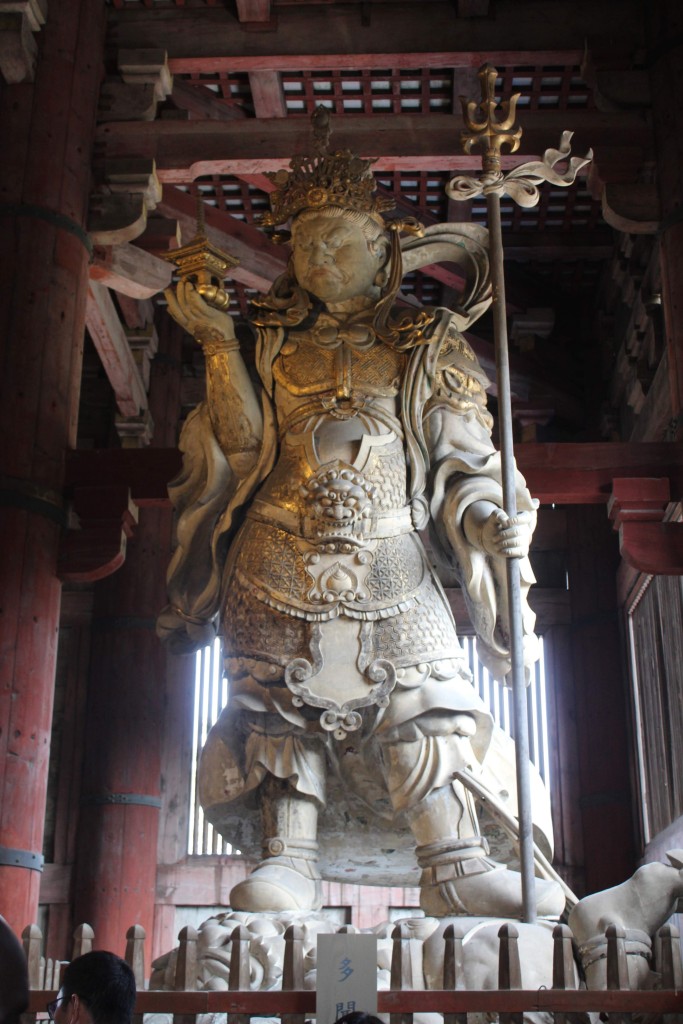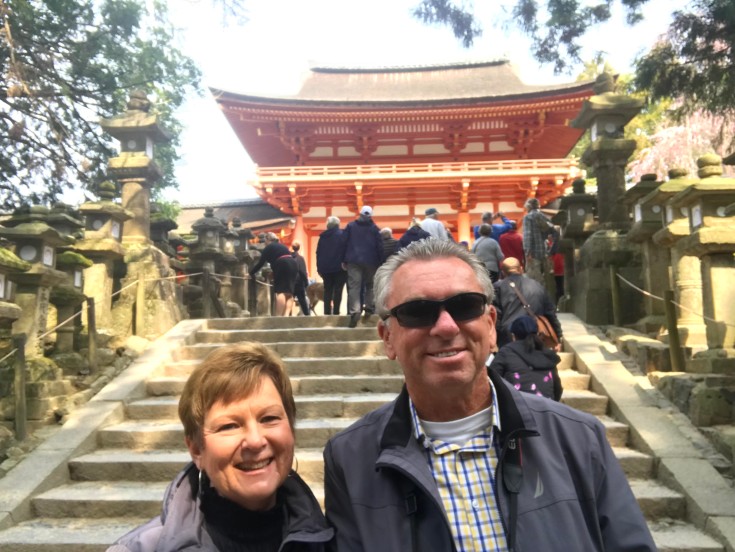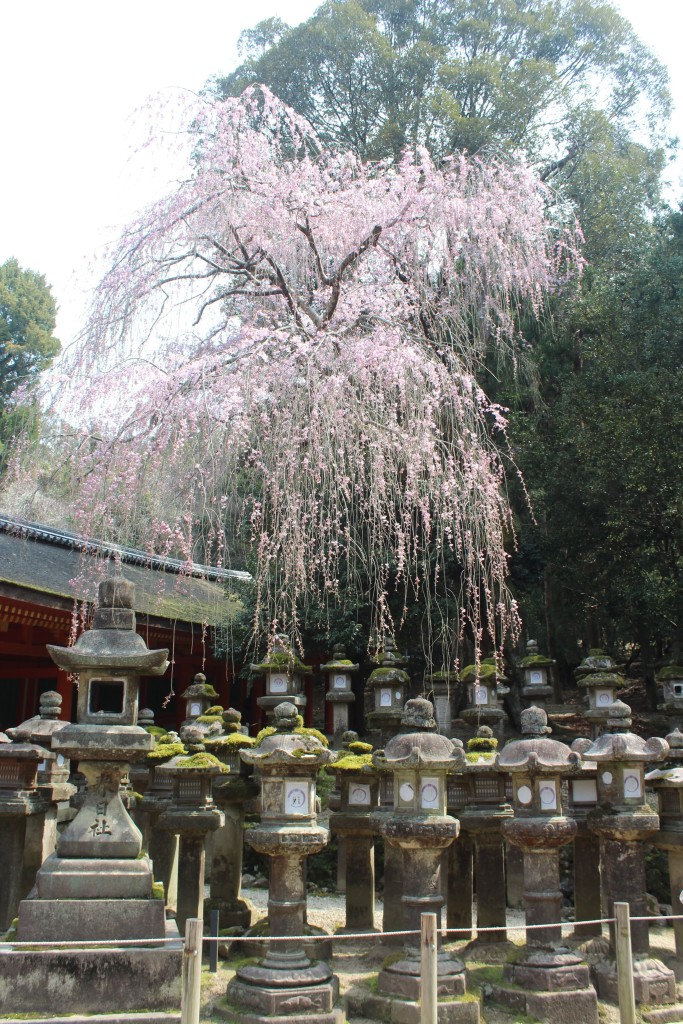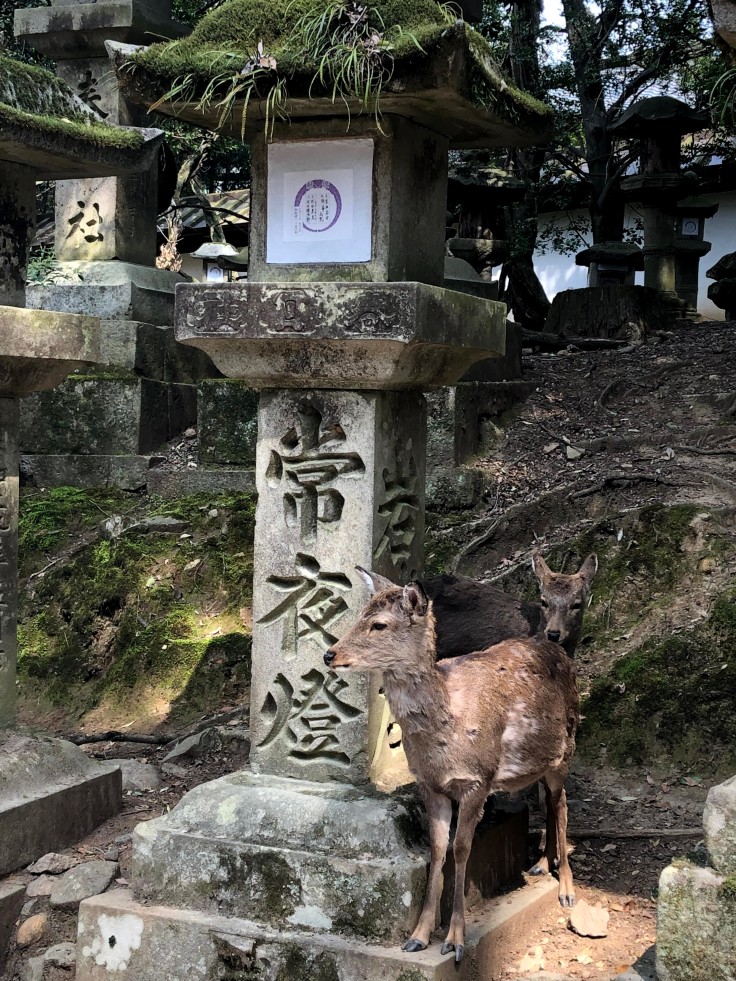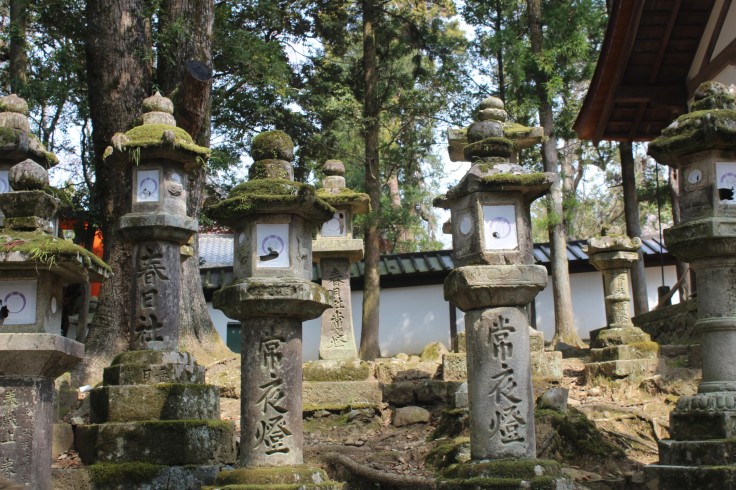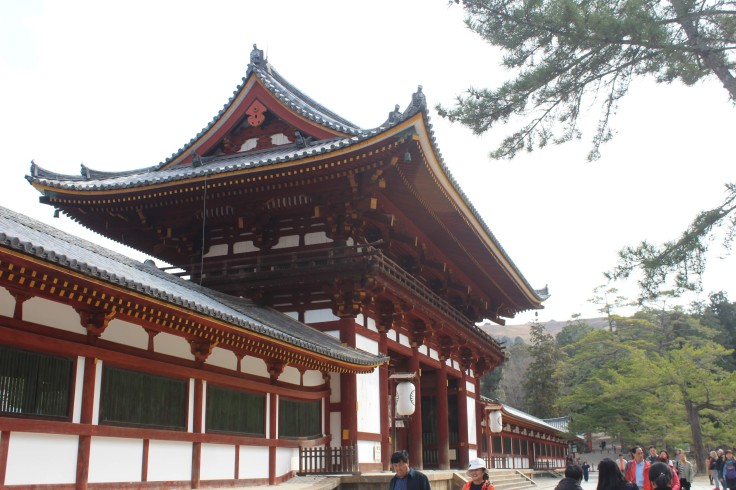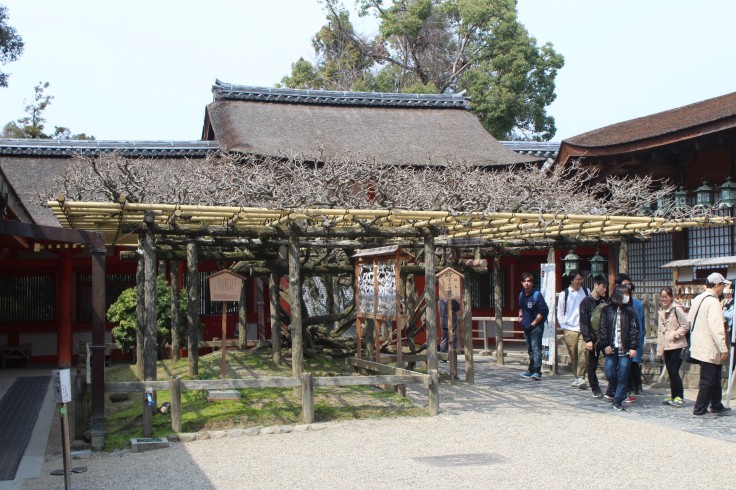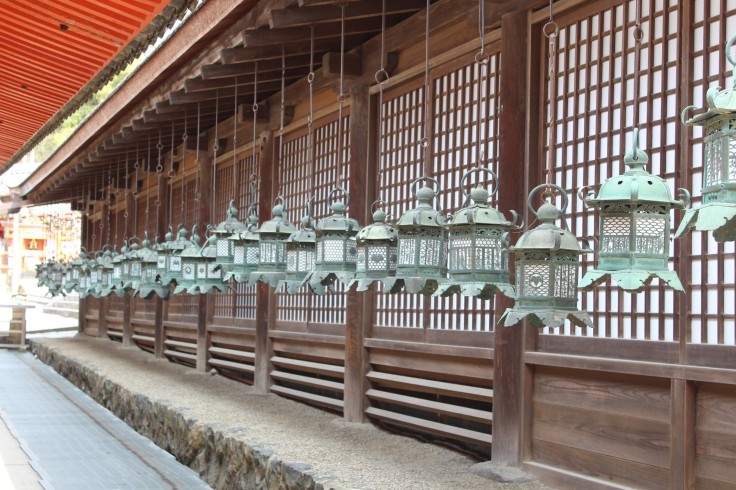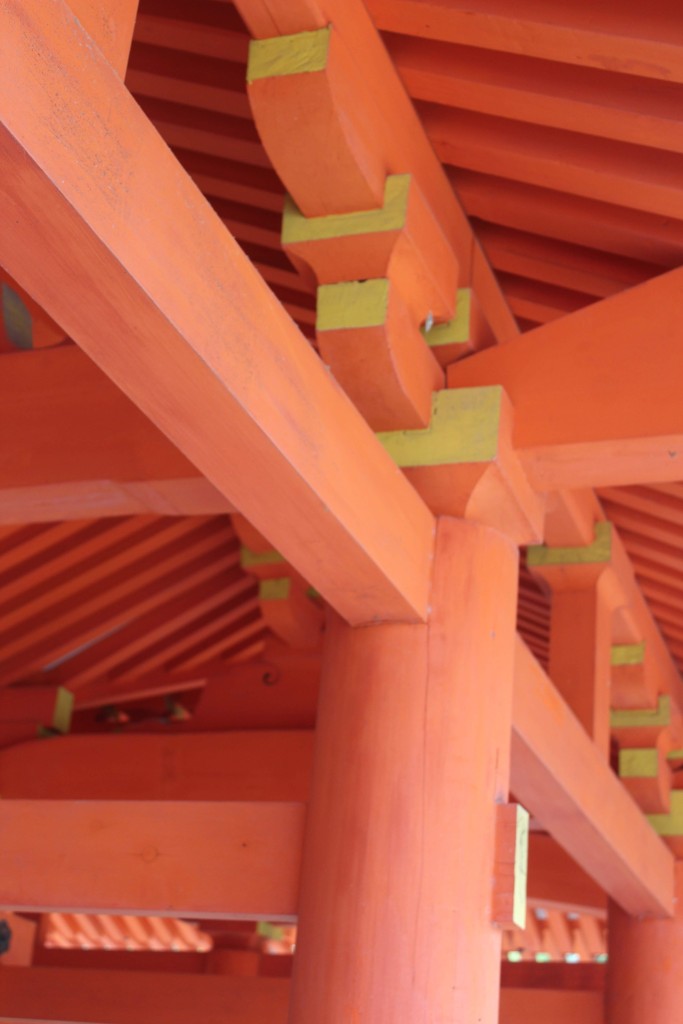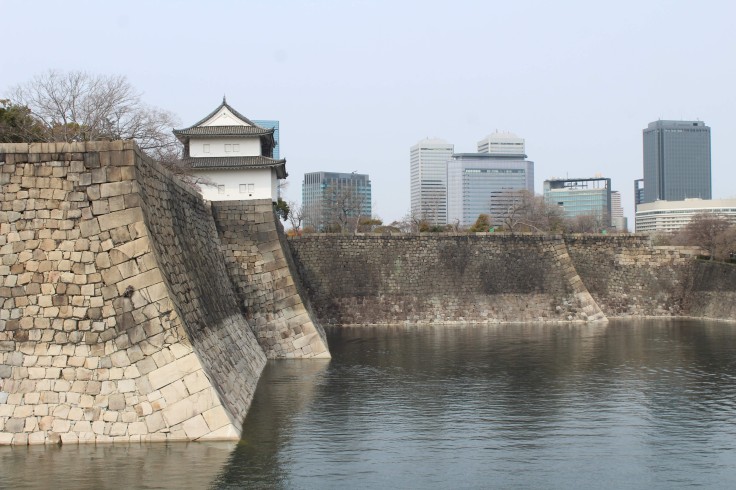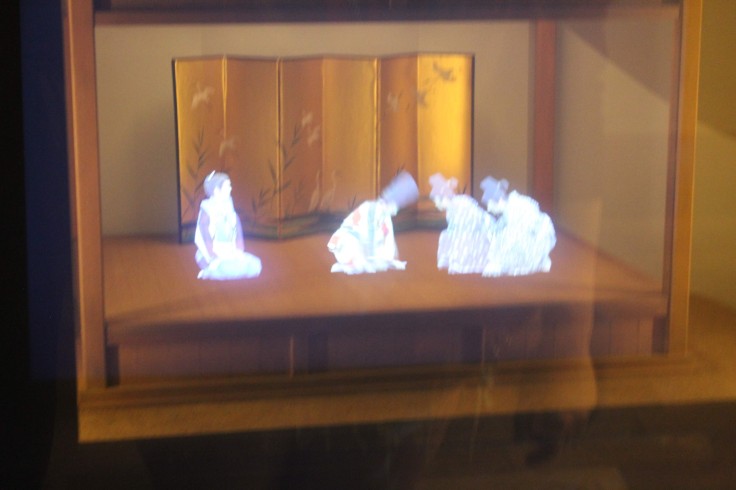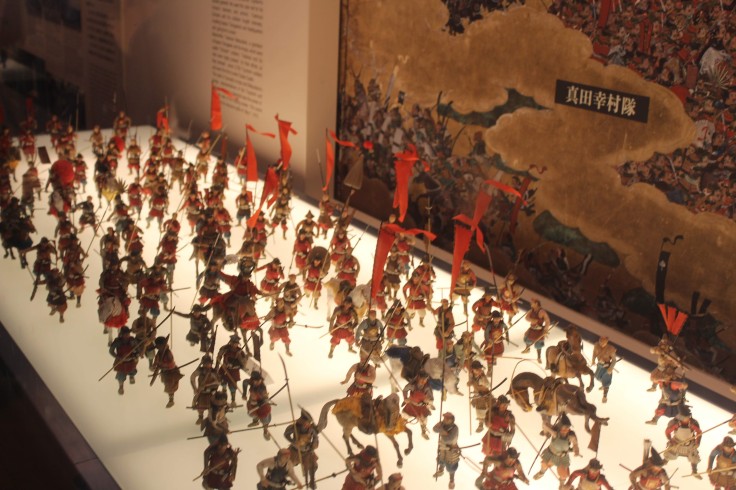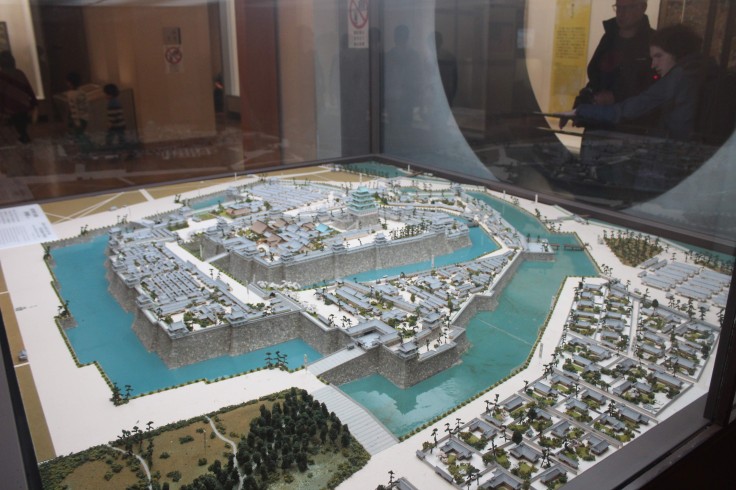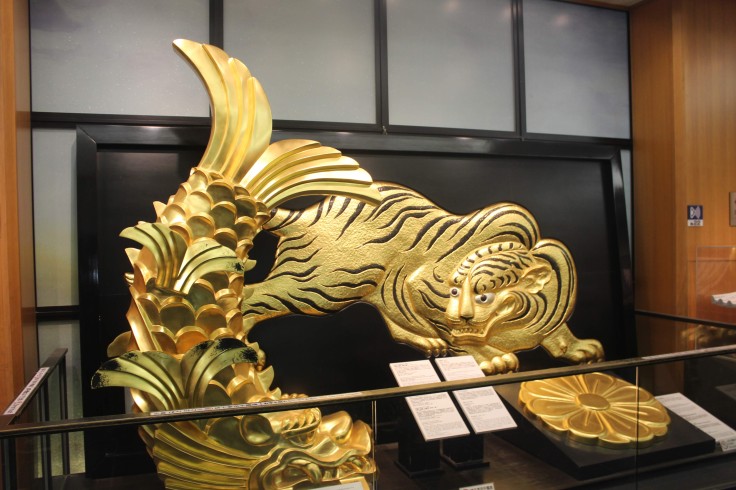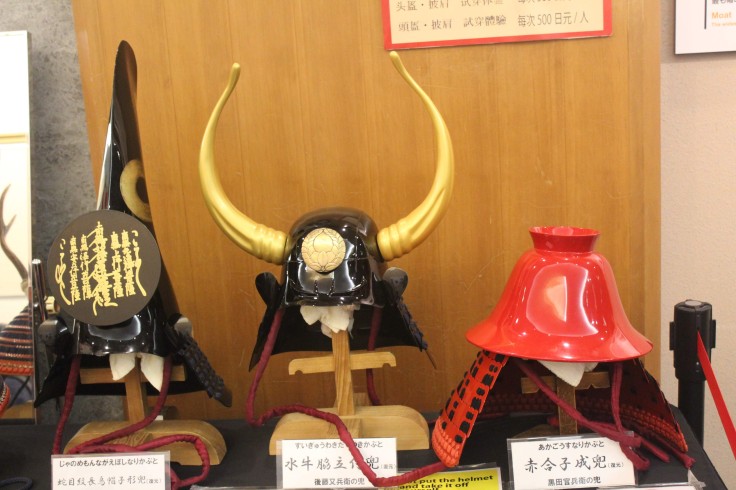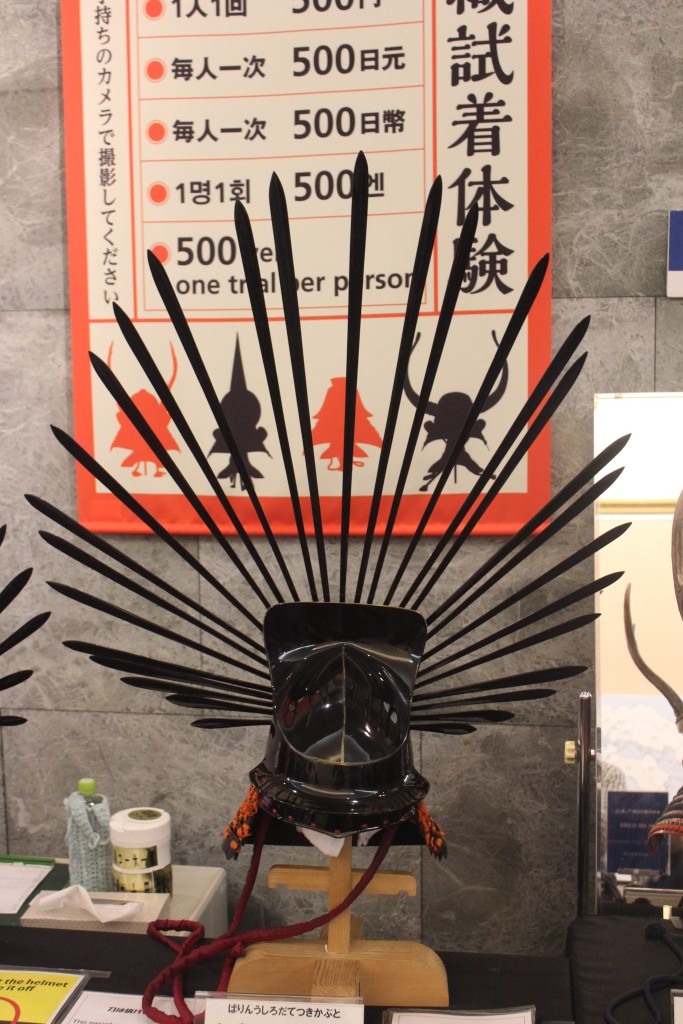Kobe, Japan, home of the world-renowned Kobe Beef. Unfortunately we did not have the opportunity to sample this local delicacy, but we did get to visit more temples and shrines! 😊
Our tour began at the Todai-Ji Temple where the world’s tallest Buddha lives inside the world’s tallest wooden building. The buildings we visited are the third iteration of the original structures, and they are not a complete replica of the original compound. Inside the temple there is a very detailed wooden model of the full original complex built by local juvenile inmates. The buildings that are now in place were built over 300 years ago, using the same materials contained in the original buildings. It’s impressive to think about the expertise and labor required to build these things 300 years ago; imagine doing it in 728 A.D.! The Buddha itself is over 300’ tall, making the building probably five or six stories tall. In the original complex there were two towers on either side of the Buddha building that were more than seven stories tall.
On either side of the main Buddha, are two other Buddhas. These two Buddhas represent the on-going quest to reach full enlightenment. A major tenet in Buddhism is letting go of the greed associated with our earthly being. The Buddhas on either side of the main one are draped in fancy clothing and jewels, demonstrating that they have not yet mastered this requirement of enlightenment.
The temple is in the town of Nara. Immediately upon entering Nara we were struck by the number of wild deer roaming about the town. They were everywhere! And when we arrived at the temple, their numbers were multiplied. Deer are considered sacred animals here and are given free reign. There is an annual ceremony for removing the antlers of young males, but other than that the deer are pretty much left alone. Their numbers would qualify them as a nuisance in the U.S., but not here.
The Kashuga Taisha Shento Shrine was originally built in 768 to entice the gods to protect Nara. The shrine is famous for its lanterns – there are thousands of them – a symbol of illumination, a guiding light on the path of enlightenment. Most lanterns are built of stone, purchased by individuals who place their personal prayer over the candle opening, believing that this will gain them favor with the gods and increase the chances of getting the desired answer to their prayer. There are also copper and gold lanterns in the shrine, some purchased for as much as $20,000. There are several decorated sake barrels at the entrance to the shrine, representing the breweries in the area who donate their first batch of sake to the shrine for use in special ceremonies throughout the year. Another cool feature is an 800-year-old wisteria vine.
Like Todai-Ji, these are not the original shrine buildings. It, too, has been rebuilt many times over the centuries, always in keeping with original building techniques. The shrine is refurbished every 20 years, partly to ensure the integrity of the buildings, but also to ensure that the carpentry skills continue to survive from generation to generation.
Our final stop of the day was the Osaka Castle Museum, an eight-story home originally built in 1321 to house the family of a famous Shogun. The castle is protected by an enormous stone wall, much of which is original, and a moat. Inside is a Shogun museum that includes shogun artifacts, figurines in battle scenes, and displays that provide historical narratives using 3-D characters. Pretty cool.





